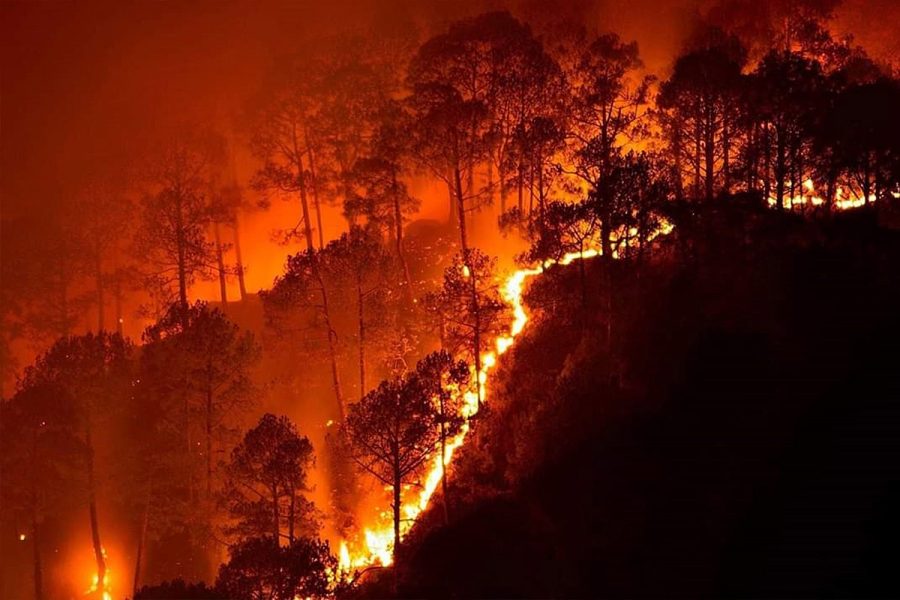The Reality of the Australian Wildfires
February 27, 2020
Our year started off with a bang. Wildfires, the Coronavirus, tensions between Iran and the United States. So much has happened in the first two months of the new year. Fortunately, the conflict between Iran and the United States has died down, but that is only one of so many terrible issues that have been resolved. The Coronavirus seems to be growing even worse, and many are beginning to worry that it will be the next big epidemic. However, that is an issue for another time. First, I must tell you about the Australian wildfires. They are a severe threat to our planet, and it is fortunate that the worst of them seem over. As we saw in January, the devastation was terrible, but February brings both good and bad news regarding the blaze: most of the fires are extinguished, but the effects are catastrophic. However, before one can understand the effects, one must first learn the background of the fires.
When Did the Fires Begin?
Early in September, reports of wildfires in Australia sprung up all over the news. They were alarming, but nothing like what was seen in January. Before January, casual stories were published, mentioning the evacuations of certain areas, but the reality of the fires failed to sink in until January.
What Started the Fires?
There is a lot of debate regarding the cause of the fires, but it is believed to be us humans. Police have taken legal action against hundreds of people, claiming that they are the cause for the inferno ravaging Australia. However, the drought Australia has been facing has greatly exacerbated the situation. With the dry weather that Australia has been facing, the smallest flame could cause the next firestorm. The dryness means that the flames are difficult to extinguish, and due to the consistency of Australia’s drought, the wildfires have become extreme. Also, the Australian winds helped spread the fires, introducing the flames to previously safe areas.
How Bad Are the Fires?
Bad. The wildfires are the worst Australia has seen in some time. In fact, the fires grew to be so dangerous that Australia declared a state of emergency on January 31st. The environment has suffered tremendously from the fires, and many fear that Australian wildlife will be unable to make a comeback. All in all, millions of acres of land have been lost, thousands of houses have burnt down, and many humans and animals have perished because of the flames.
While speaking of what has been destroyed, one must think about all the buildings and land razed by the fires. Near fifty million acres of Australian wilderness have been ruined by the inferno. That is nearly double the size of South Korea, a country with an area of thirty million square acres. Also, more than ten-thousand buildings have been burned to the ground. Out of those buildings, around three and a half thousand were homes. Fortunately, experts estimate that ninety-five percent of these buildings were insured. However, the total cost of the burned buildings alone is worth around 1.3 billion dollars, a little more than half of the cost associated with the total impact of the fires, but that is still a large sum to pay.
The tragedies mentioned are already terrible, but it only worsens. Many lives were lost because of the inferno. In fact, it is estimated that over a billion animals have died because of the flames. However, the loss of forests has caused other animals to perish because of the destruction of their homes. Fortunately, relief efforts are in place to help relocate the now-homeless and dying animals. Unfortunately, mankind has also suffered casualties. Thirty-four people have died because of the blaze. Out of those thirty-four, three American firefighters died in a plane crash while helping extinguish the burning land. Overall, the wildfires destroyed millions of acres of land which will cost Australia billions in insurance claims alone, and now the flames have taken the lives of over a billion animals and thirty-four humans.
Are the Fires Over Now?
The fires are currently still burning, but rains extinguished around a third of the fires in the first week of February, with many more coming to an end the next week. However, some are still burning, but they are contained by firefighters. Despite taking the lives of so many and damaging so much land, only a few of the blazes remain, a sign that hopefully portends the end of the Australian wildfires (and this article).


